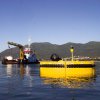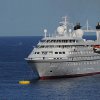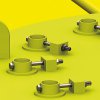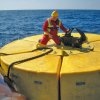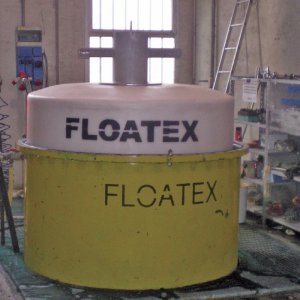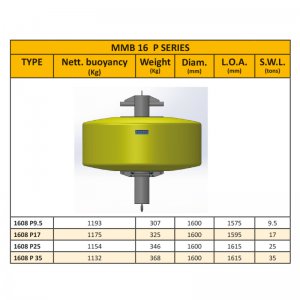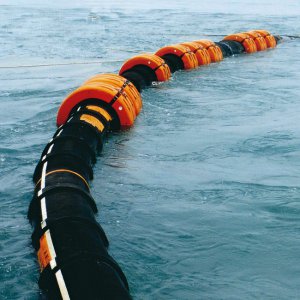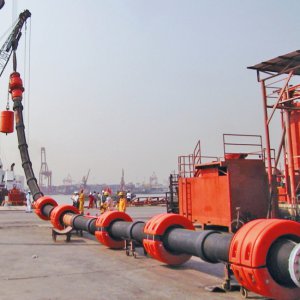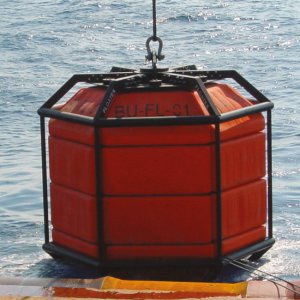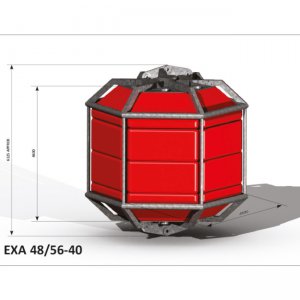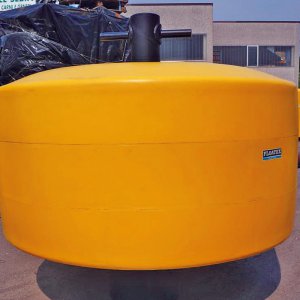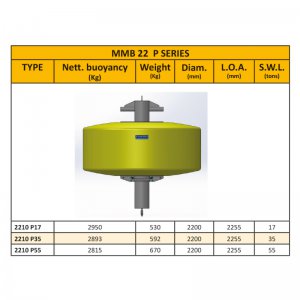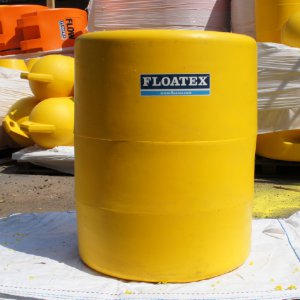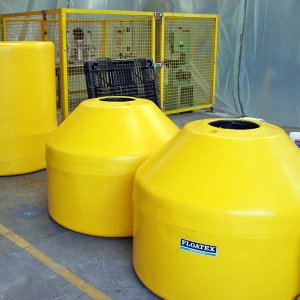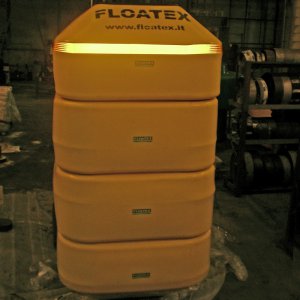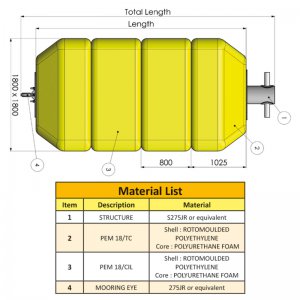MMB 4300 MOORING BUOY SERIES
MMB 4300 MOORING BUOY SERIES
| MODULAR MOORING BUOYS | Nett. buoyancy (Kg) | Weight (Kg) | S.W.L. (ton) |
|---|---|---|---|
| MMB 4311 | 12150 | 3170 | 180 |
| MMB 4314 | 15845 | 3685 | 180 |
| MMB 4322 | 25500 | 5100 | 180 |
| MMB 4325 | 29000 | 5620 | 180 |
| MMB 4328 | 32900 | 6150 | 180 |
Floating Modules
Each module of the Floatex mooring buoy is made in rotomoulded UV-stabilized linear virgin polyethylene. The Polyethylene used in the manufacturing process is completely recyclable (Eco-Friendly), it's fully compatible with the marine environment, and has a high resistance to UV rays. Being linear has the advantage that it can be melted and hence repaired by hot fusion welding.
The colour pigment is moulded-in and consequently not added as a coating ensuring greater lifeof the color and a big help to the environment as it never requires additional paintings, avoiding toxic dispersions in the water. Floatex polyethylene require a minimal maintenance.
Each module is filled with closed-cell polyurethane foam.
The polyurethane foam ensure great resistance to the leakage of air or water, ensuring unsinkability to the buoy also in case of accidental breaks of the outer shell.
The polyurethane foam is 100% made and tested before production by our R&D laboratory. Thanks to its construction the modules are completely interchangeable.
Furthermore, the modular configuration ensures that, in case of accidental breakage of one module, The mooring buoy maintain enough buoyancy to continue his work at that moment.
Fender modules protection
The upper line of the modules is equipped with horizontal elastomer polyurethane fender to protect the buoy to any accidental small crash or mooring of barge boat or tugs. Using polyurethane fender instead of rubber fender has the advantage to avoid the dispersion of colour which often happen with rubber fenders causing stains on the boats. The polyurethane has the advantage to leave slide the water decreasing at maximum the friction between the fender and the barge ships.
Metal Part
Central metal frame in steel, sandblasted, galvanized and marine painted with grade polyurethane.All the floating modules are fixed on the central steel frame with passing through steel pipes complete of tightening hardware to avoid trembling between central steel frame and the floating modules. Central steel balanced rod allows mooring chain connection through suitable pad eye configuration.
The standard SWL of the buoy is 180 Tons but different load can be applied upon request.
For the connection between the buoy and the vessel, the buoy can be equipped, upon request, with Quick Release Mooring Hook, Standard Pelican Mooring Hook, Pad eye, Crucifix Bollard or Mooring Ring.
Lantern and passive radar reflector
Floatex mooring buoys can be provided with radar reflector and self-powered lantern with relative support piles. The lantern ensure an aids to navigation during the night hours while the passive radar reflector allows to better reflect the electromagnetic waves and highlight them on the onboard radar screen.
Lifting auxiliary eyes
Floatex mooring buoys are equipped with 3 eyes on the upper part of the buoy and 3 eyes on the lower part of the buoy to facilitate lifting and handling operations during the installation.
Zinc anodes
In order to preserve at maximum the metal parts of the buoy and allow a longer life of the same, each of Floatex mooring buoys is provided with sacrificial anodes in zinc.
Advantages Polyethylene Hybrid Buoys Against Steel Buoys
- The Polyethylene used in the manufacturing process is completely recyclable (Eco-Friendly), it's fully compatible with the marine environment, and has a high resistance to UV rays. Being linear has the advantage that it can be melted and hence repaired by hot fusion welding. The colour pigment is moulded-in and consequently not added as a coating ensuring greater life of the colour and a big help to the environment as it never requires additional paintings, avoiding toxic dispersions in the water common with the steel buoys.
- The polyethylene buoys, compared to the steel buoys require very low maintenance,
almost reduced to zero. It is always recommended and useful to perform annual maintenance of the buoys for cleaning the floating modules and control the metal parts. - The Polyethylene used in the manufacturing process is high quality products and compared to the steel is less affected from plant life reducing as much as possible the maintenance related to the external cleaning of the module.
Moreover the colour RAL used by Floatex is in compliance with recommended IALA scale chart.
Floatex has the possibility to test the grade of the colour of its polyethylene thanks to the spectrometer which is daily used by Floatex laboratory to test the manufactured pieces. - The weight of the polyethylene buoy compared to a steel buoy is lighter facilitating the operation of handling, assembling and installation.
- The polyethylene buoys compared to the steel buoys offer the possibility to replace also only one floating module, in case of occasional damage, in a simple and fast way.
This operation is not possible with a steel buoy; if a damage occurs it is mandatory to replace it completely or perform operation of welding onsite. - The freight of a Floatex polyethylene hybrid buoy, as stated above, can be carried in standard containers or trucks avoiding the high cost and timing of the oversize trucks.
- Polyethylene buoy does not need such tests as steel buoy.
For example the polyethylene buoy does not need Hydraulic test as the floating modules are totally independent and ensure the floatability of the buoy also in case of small damages. - Last but not least, aesthetically Floatex hybrid polyethylene buoys provide a visible colour for many more years than steel buoys.
Floatex, moreover, performs aging tests on samples of polyethylene to ensure an excellent quality of the same product in the course of the years.


